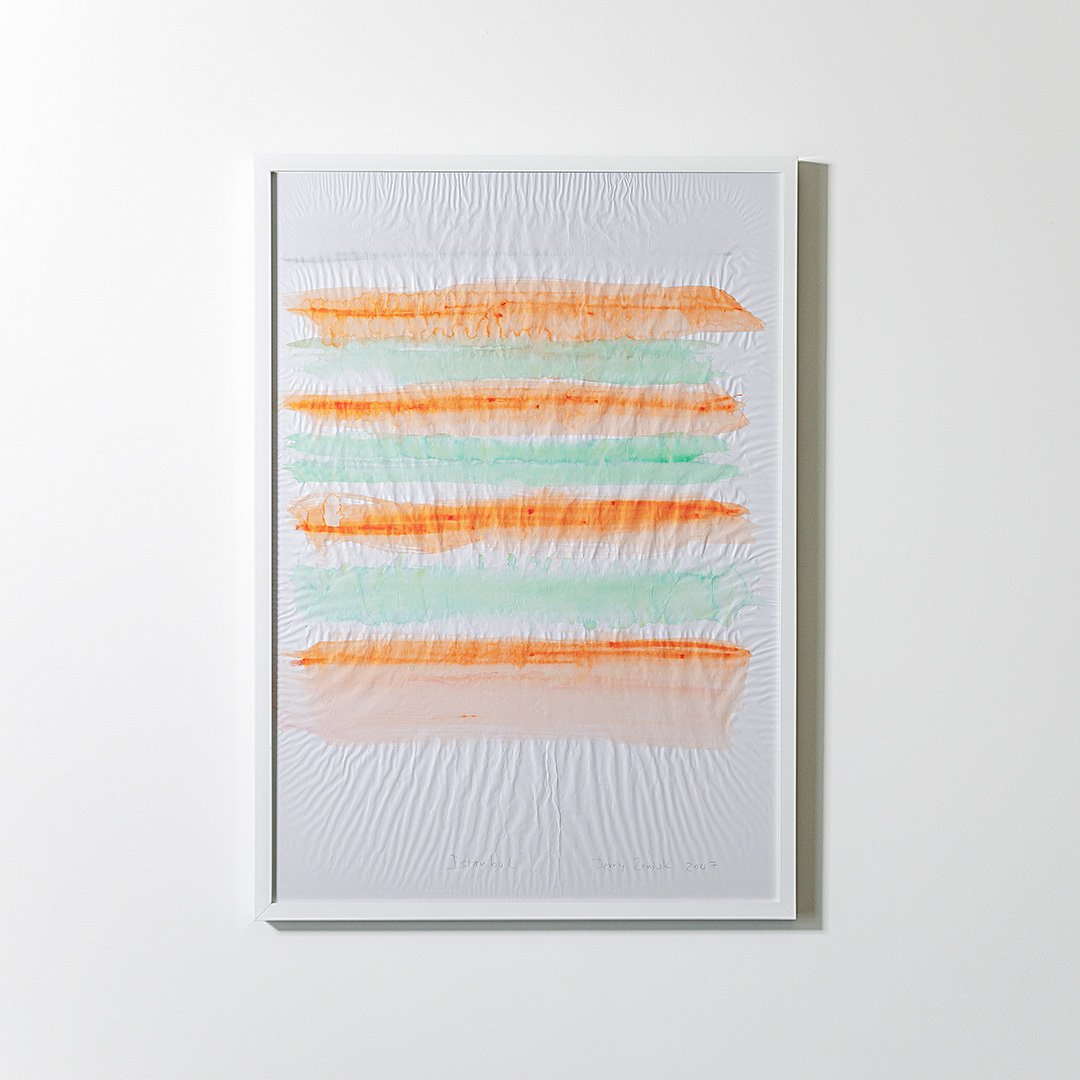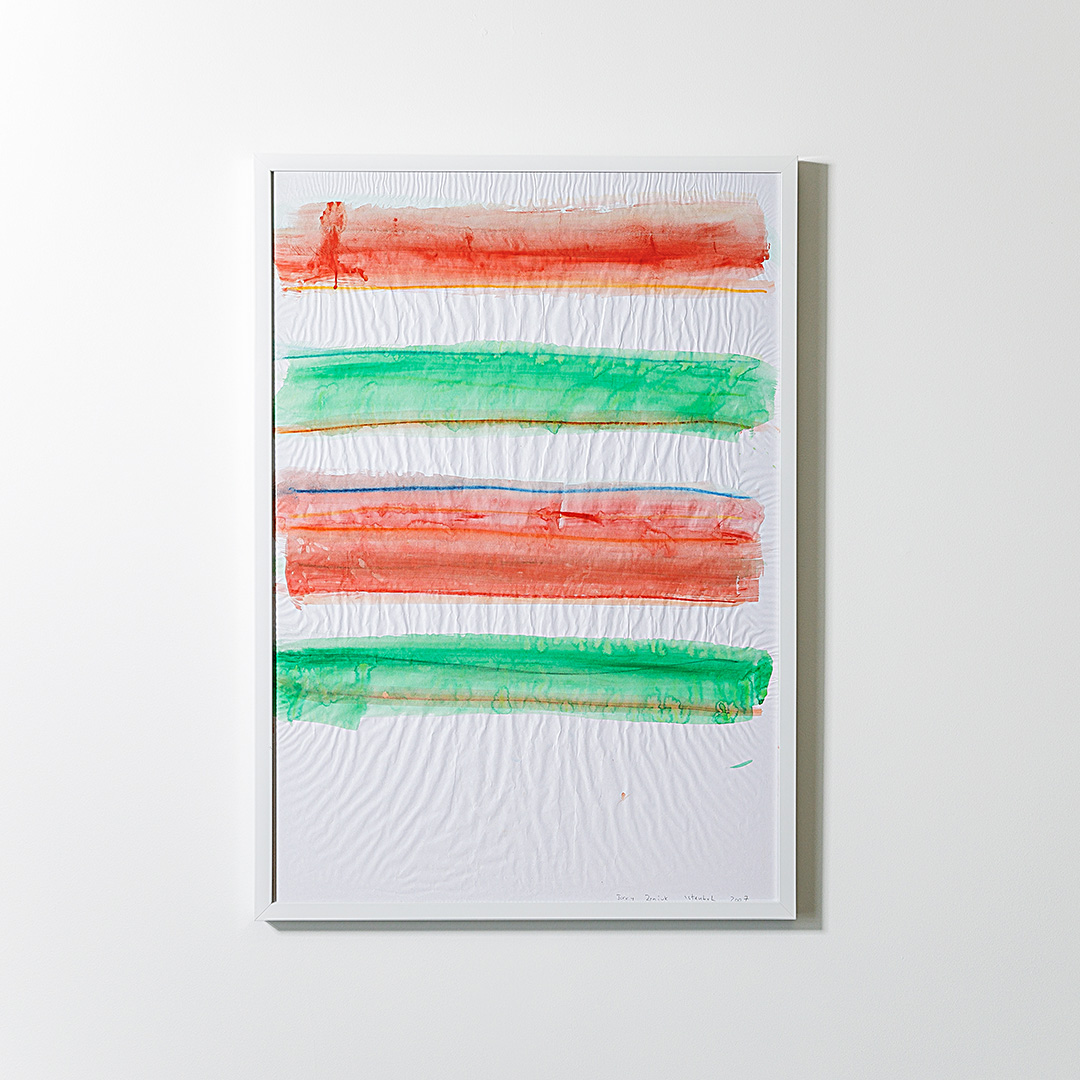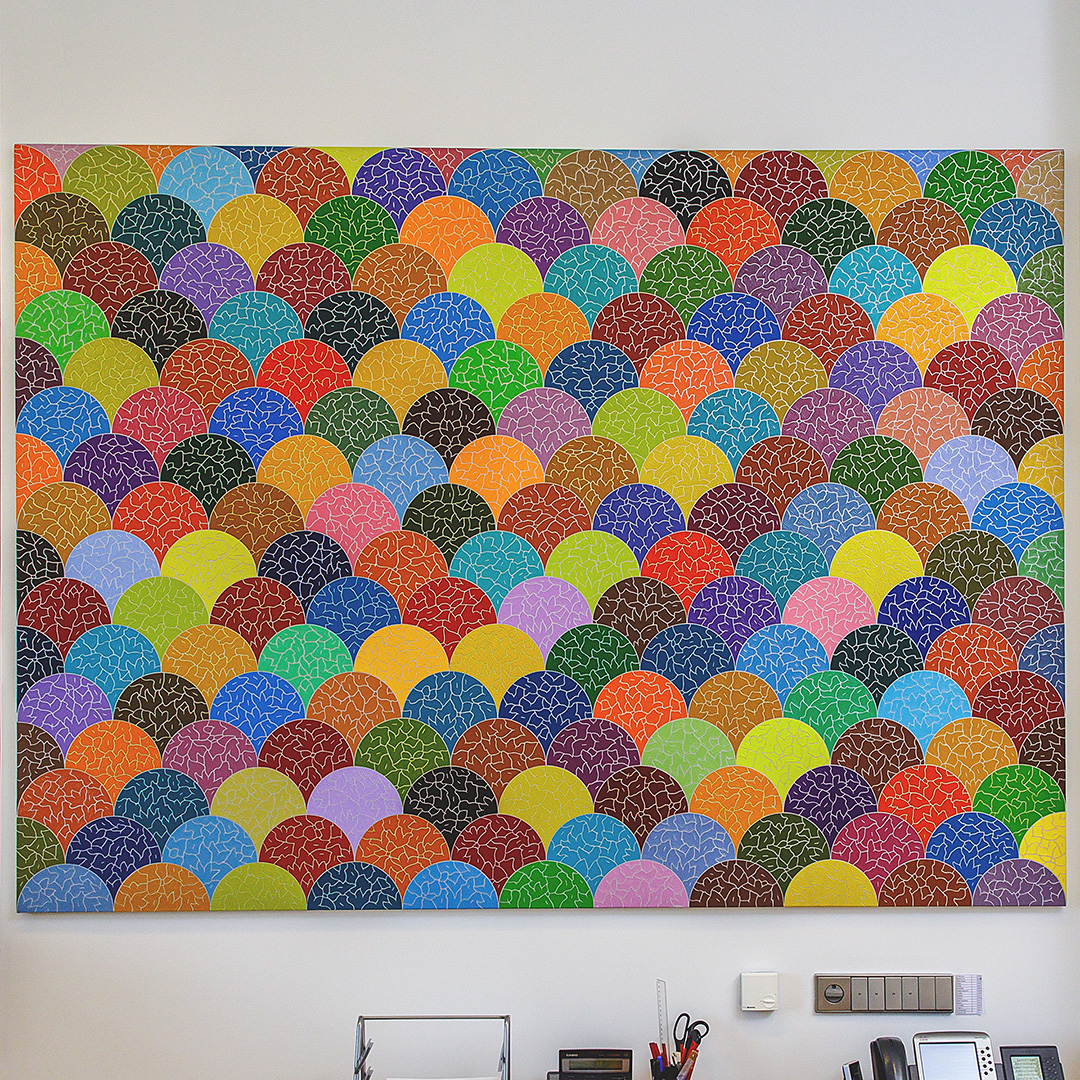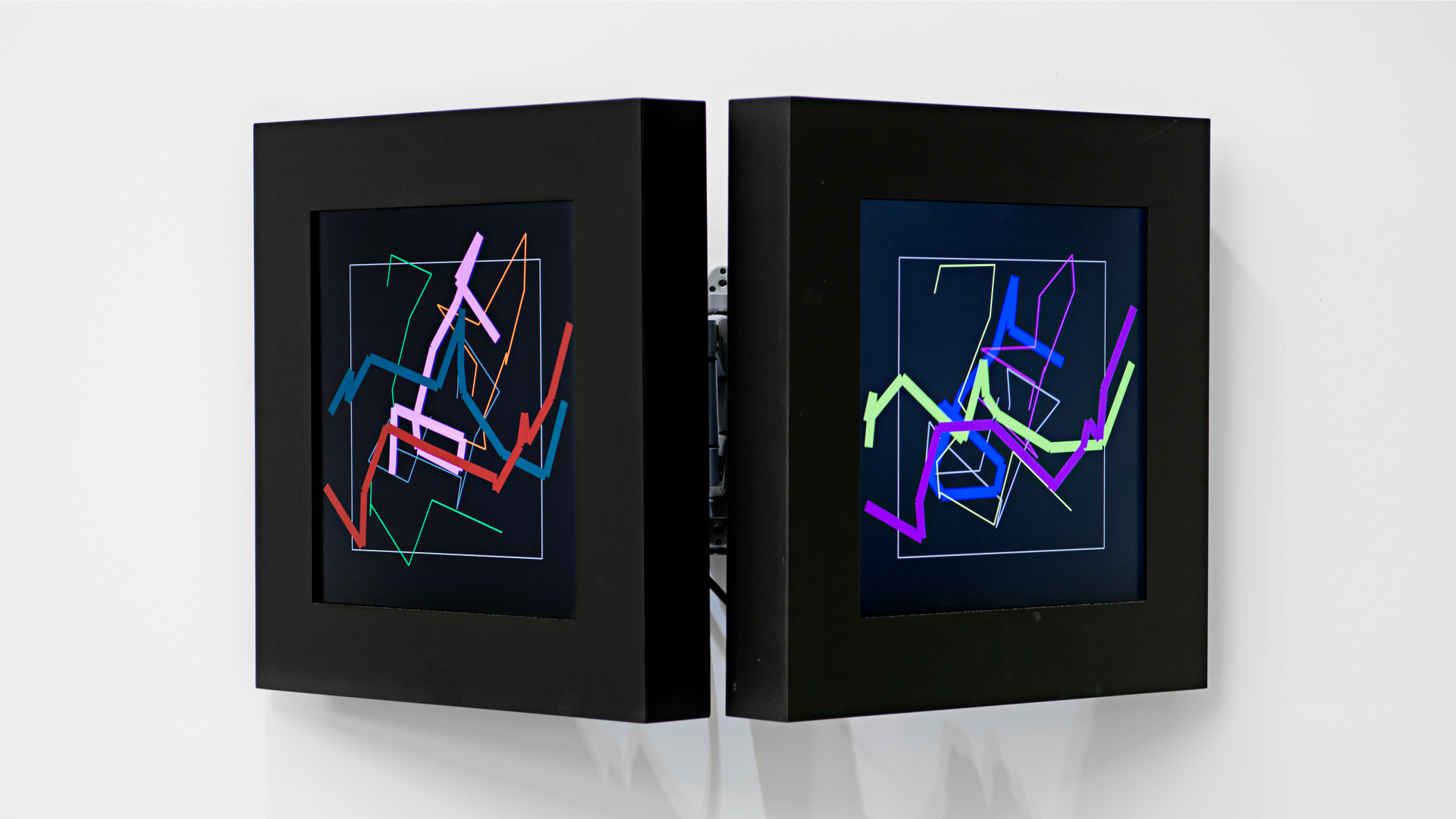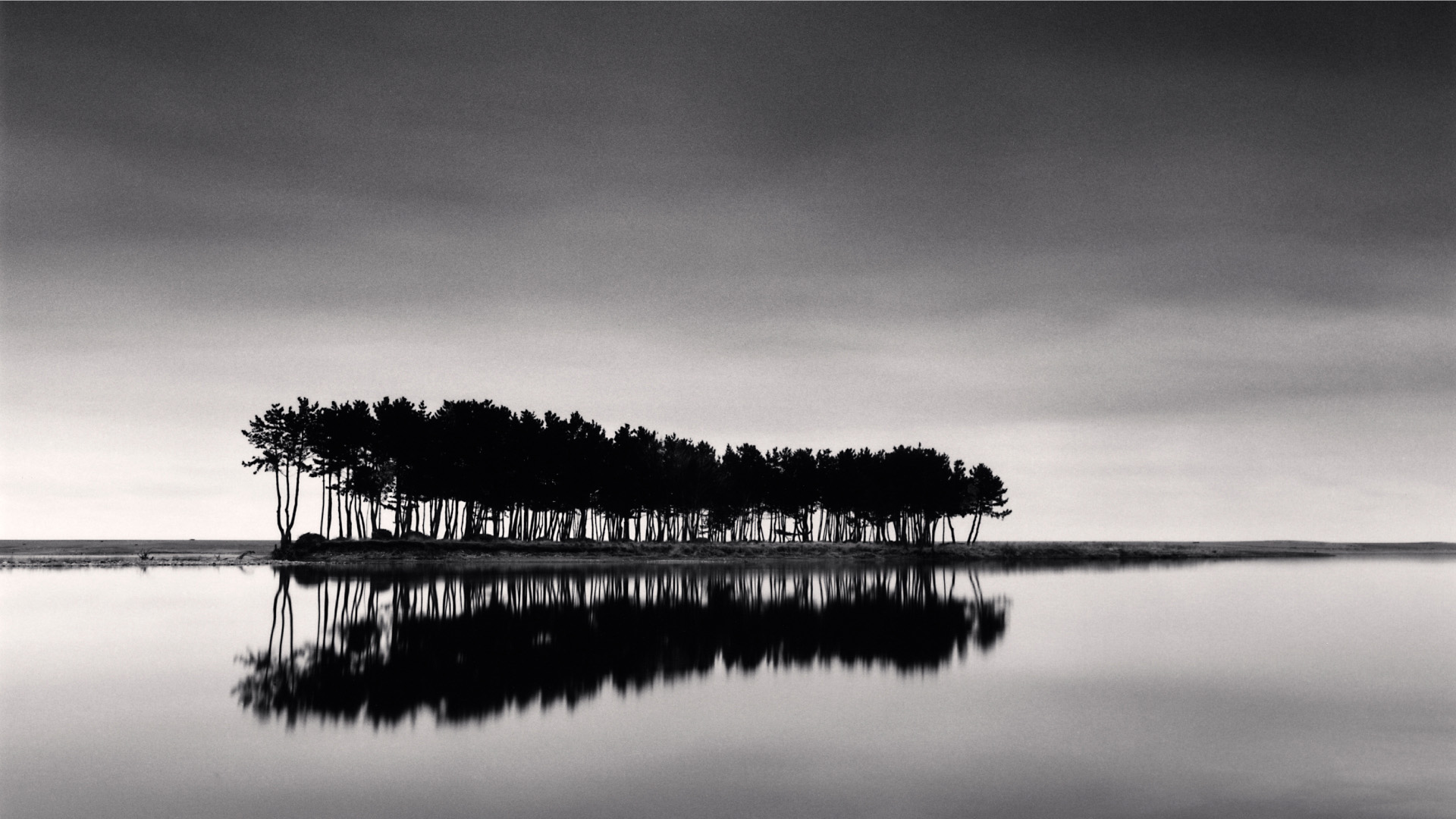Blog
Conversations: Necmi Sönmez, Part 2
28 February 2020 Fri
Necmi Sönmez, PhD, has most recently curated the exhibition, They are Uttered and Left Unfinished All the Loves in the World II, on view at Borusan Contemporary until March 8, 2020. We published this extensive interview with Sönmez, who works with the Borusan Contemporary Art Collection, in two parts. To read the first section, please click here.
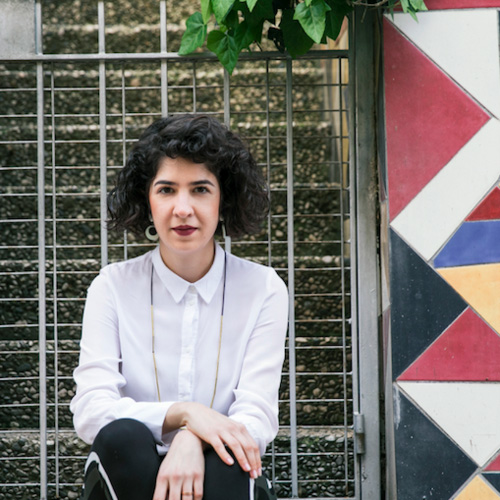
NAZ CUGUOĞLU
nazcuguoglu@gmail.com
Inviting a curator to an institution’s collection could mean various things: A dialogue or a monologue—emptying all the existing narratives to define them with new meanings or reshuffling them around. These collaborations require horizontal allies and generosity from both sides—an attempt to find the undercommons in a world of broken relationships.
Borusan Contemporary has invited seven curators in the last six years to its ever-growing collection of new media art to unlock these probabilities. This series of conversations is a curious response to this cultivating network of associations and relationships, marked with site-specificity and temporality, in a city that is always in flux.
– Naz Cuguoğlu
Naz Cuguoğlu: When we take a closer look at the collection, we encounter a wall painting that Jerry Zeniuk produced specifically for the Borusan meeting room, for example. This work is the echo of the Bosphorus view—the painting does not try to compete with the Bosphorus, but rather accompanies it with the colors yellow, turquoise, and orange. What other works in the collection were produced specifically for the venue and what were the criteria that you took into account?
Necmi Sönmez: The wall painting in the main meeting room on the eighth floor was produced in 2011 on the occasion of the opening exhibition at the Haunted Mansion. In addition, Paul Schwer, Peter Kogler, Ekrem Yalçındağ, Beat Zoderer, Ayşe Erkmen and Thierry Dreyfus made site-specific works on the different floors on different dates. It was not clear whether these were permanent or temporary. Movement / fluidity was an important starting point from the beginning of the collection, an idea developed by Ahmet Kocabıyık. Since the works are aimed to remain in circulation, some works have been designed in such a way that they can be repeated in different spaces of the building, based on the instructions provided in the contracts. For example, the work of Peter Kogler, across all the stairwells of the building, was removed five years later and the light installation of Erwin Redl was installed there. Video projections of Thierry Dreyfus are designed to be watched only at dusk.
NC: Similarly, on the terrace of the Haunted Mansion, the viewers encounter a panoramic view and Istanbul is on display in its entirety here. This site was also built as a "room of one’s own." The works on this floor invite the viewer to a journey between the senses so that they can meditate in their inner voices. Could you talk about these works and the journey that brought them to this point?
NS: The eighth floor has a unique view due to its closeness to the bridge and the ninth floor is close to the Rumeli Fortress. On the terrace of the ninth floor, there are works by Andrew Rogers, Beat Zoderer and Ekrem Yalçındağ. The invitation to meditation is an important observation. I am very pleased that you have felt this. In these terraces, the winds that blow ceaselessly every season, will amaze the audience. The flowing rhythm of the Bosphorus at some point makes itself apparent when a strange humming sound fills the audience’s ears. It is possible to feel that the works of art are free from materiality in an area with such a natural attraction. This is somehow the magic of the Haunted Mansion.
NC: You mentioned that you made research on Video Art in China for more than three months. Your exhibition on Chinese Video Art in 2015 was the result of a long-term research process. What kind of methods did you develop so that you would not to fall into the position of an anthropologist during these studies in a different culture? As a curator, what kind of methodologies do you use to look at another culture as an outsider, away from prejudices and the stereotypes. Is this objective perspective even possible?
NS: The preparation process of this exhibition has developed quite differently from my previous works. There was yet no exhibition on Chinese Video Art as how we developed the concept with Ahmet Kocabıyık. I will admit that I thought I would not be able to handle it. It was not possible to find resources other than a few books published on the matter. After getting these books published in the US, I created a list of names following a very detailed research process. Then I visited the art workshops, academies and private collections in metropolitan cities, especially in Beijing, Taipei, and Hong Kong, and collected information on video practices. Almost all of the artists who made the first experiments with video were alive. Talking to them was mind-blowing; they told me about their students and their works. In this way, I developed a mapping system consisting of lists and names all added together. After developing categories that deal with these artists, and their themes and works through scientific methods, I was able to give my research a more personal direction. I focused on how the artists looked at the results of the industrialization processes. The othering of the Chinese artists was troubling them. I had to give credible answers when they constantly asked me why I was working on video art, what I was looking for. My Chinese skills, which did not exceed 15-25 sentences, helped me not to get lost. Because I was constantly getting lost! Do not think that I exaggerate when I say that sometimes even taxis were hesitant to enter some of the abandoned places that I was visiting.
NC: What do you think about the relation between the Chinese Contemporary Art, which is inspired by different storytelling traditions and the new media art? What can you say about their shared characteristic of creating future scenarios and making use of speculative fiction?
NS: I would like to respond to this question using a paragraph from my catalogue essay for the exhibition: “Contemporary Chinese Art is at a level that could compete with the world standards in terms of both technical and imaginative aspects. China is a country that is acknowledged by the world as an economical power and the main question/problem is if it will be able to support this success with its interpretation of contemporary art. This situation that could be considered as a facedown ("Kraftprob" in German) makes the New Media Art works produced in China even more interesting. This is supported by the fact that works produced within China's conditions make their characteristics felt at once. This difference, no matter how related it is to clichés and stereotypes, underlines a feature that could be considered among the most significant "weapons of Chinese Video Art. For example, Zhang Ding, who was born in China in 1980, does not fall short of the American artist Carlin Wing of the same age. These two artists producing their works at two different ends of the world create works that find a common ground in spite of different origins and cultures, and this brings on the agenda an important phenomenon of ‘commonality.’"
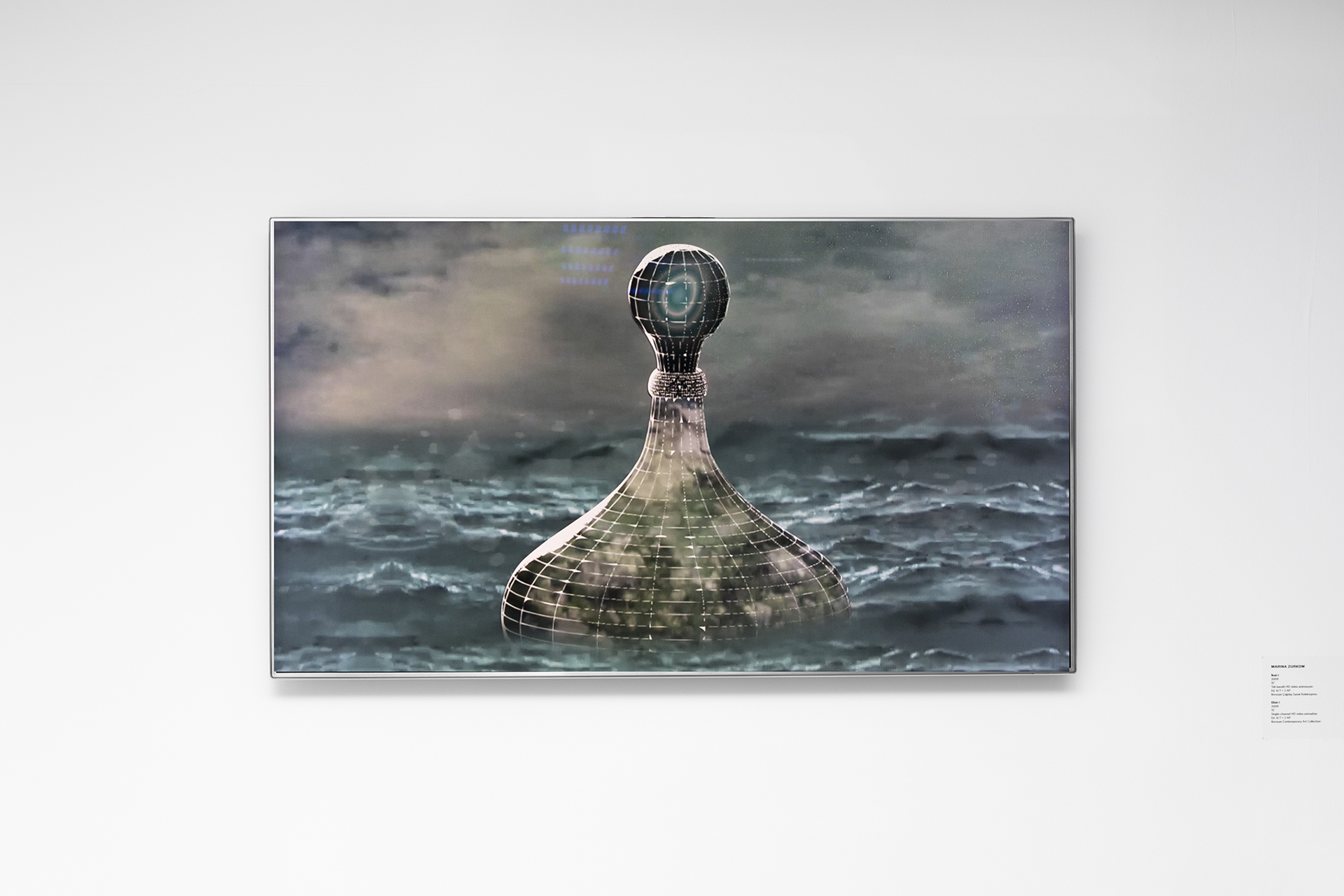
Marina Zurkow, Elixir I, 2009
15’, 15’, single-channel HD video animation.
NC: You have curated exhibitions with conceptual frameworks drawn from literature. For example, the exhibition “Passion” aimed to bring the image-driven character of the collection to the surface by looking at the writings of Leyla Erbil. You defined this as an experiment to establish a relationship between a collection and an author. How did you translate this relation in the exhibition space through the works you selected?
NS: I had previously created a series for the collection exhibitions under the heading SEGMENT. This series was directed towards the new movements within the collection, which was growing through acquisitions and the leaps it was making were revealed. These leaps were moving towards a different body both through the acquisitions and through Ahmet Kocabıyık’s commissions to artists. The Borusan Contemporary collection was evolving organically. I thought that a good way to look at this was literature. Furthermore, I was interested in using Modern Turkish writing and poetry, which had interested me for a while now, to produce a unique framework. Looking at authors and poets whose works I had been following closely, I wanted to see what could happen when I brought written and visual images together in different forms. For this, it was necessary to develop an abstract framework that does not form a one-to-one response. Because the artists did not know the authors well nor had read any of their works. Putting the text of Leyla Erbil next to the works produced with the new media technique was very exciting but also instructive. As I heard from viewers that various aspects of the collection emerged from this convergence, my belief that this method could be a way to create a better sharing ground strengthened. When I say sharing, I am talking about a democratic interpretation art that viewers can access through their senses rather than a didactic, information-driven explanation.
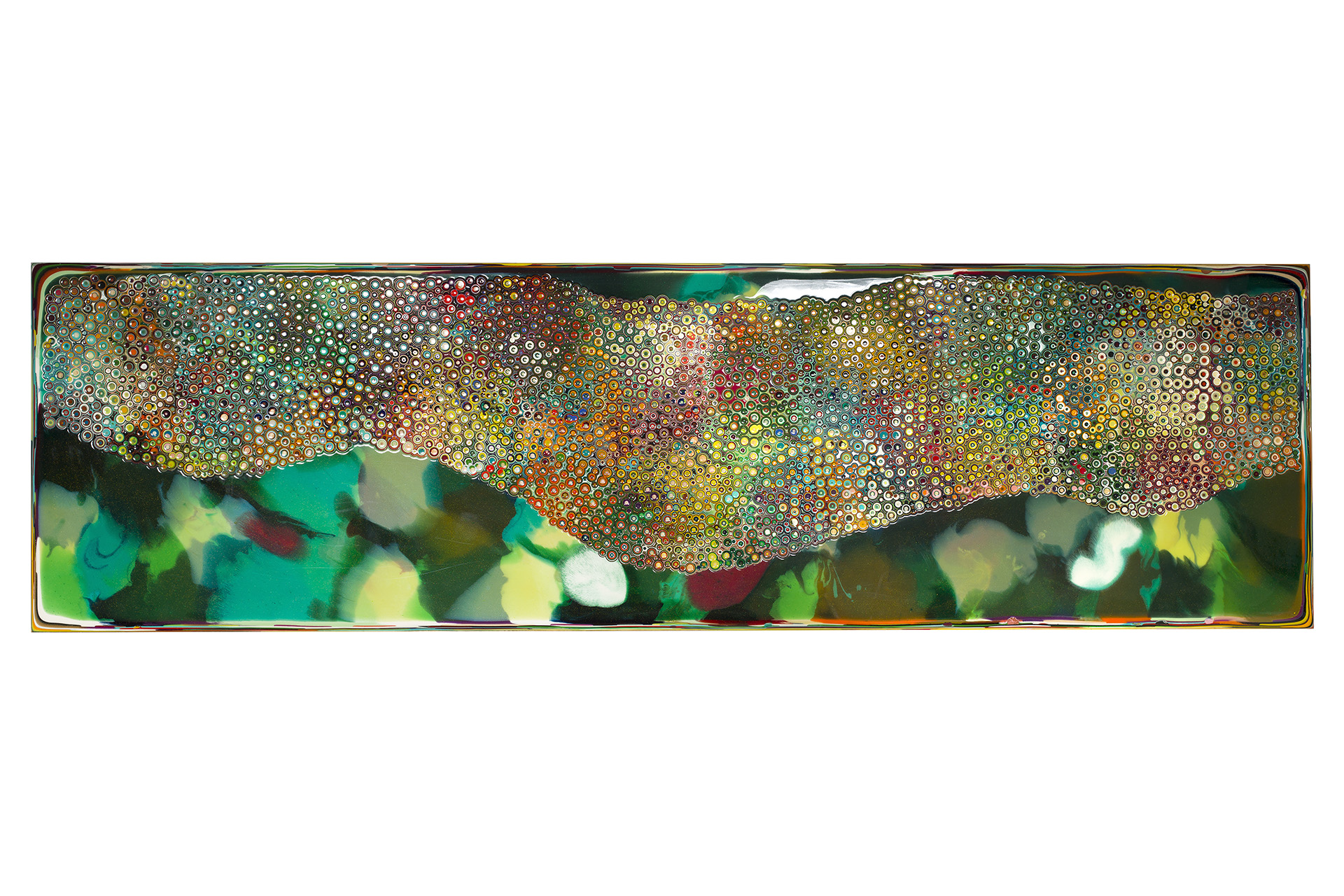
Markus Linnenbrink, Wenndaslichtsichendlichauftut, 2007
80 x 280 cm, epoxy resin on wood.
NC: The exhibition that you curated in 2015, Deck Voyage, was based on Tezer Özlü’s Journey to the Edge of Life. What was the experience of reinterpreting the new acquisitions to the collection through this author’s work and what were the limitations for you?
NS: Both Tezer Özlü and Leyla Erbil were the writers I was very influenced by. It was equivalent to me to try to understand life through their books—similarly, one could look at a collection through their books. I was aware of the power of writing, but could I open the doors of a collection that included works that were not easy to dissect? What would I show to the audience? How would I show this to the audience? As I thought about such problems, I realized that it was not a bad idea to stay close to literature and poetry. I obviously could not expect the audience to have read the works of the writers and poets. Here I thought of starting out with certain literary pieces. As I placed the poems around the works, I felt that I was moving towards a specific staging and a fiction. Viewers started to follow these stagings since 2016. Literature enthusiasts who had never been to a museum before were encountering new notions through a visual approach. There is something about literature that gives wings to interpretation; this refers to that enriching experience that you were previously talking about. The feedback I received from young people reveal that these experiences defy pre-conceptions and this makes me incredibly happy. I don’t know if I could call this a limitation but some viewers had this strange, archaic, goal-driven “what is this work telling us” attitude. I started to think about what I could do to liberate them from their expectations, so that they could see and experience this pleasure.
NC: What are you thinking about these days? What are you working on?
NS: Edip Cansever is the starting point of the next collection exhibition to be opened in March. I was inclined to read all his books. I am trying to complete the second-round while taking notes now. I also started to create an archive by collecting the articles written about him. There was an antique store at the Grand Bazaar. I started to meet people who bought antiques from him, looking at the objects they bought. This excites me, it is like seeing the imagery of Cansever in 3D.
ABOUT THE WRITER
Naz Cuguoğlu is a curator and art writer, based in San Francisco and Istanbul. She is the co-founder of Collective Çukurcuma. She held various positions at KADIST, The Wattis Institute, de Young Museum, SFMOMA Public Knowledge, Joan Mitchell Foundation, Zilberman Gallery, Maumau Art Residency, and Mixer. Her writings have been featured in SFMOMA Open Space, Art Asia Pacific, Hyperallergic, Nka: Journal of Contemporary African Art, M-est.org, and elsewhere. She received her BA in Psychology and MA in Social Psychology, both from Koç University, and another MA from California College of the Arts’ Curatorial Practice program. She has curated exhibitions internationally, at institutions such as the Wattis Institute (San Francisco), 15th Istanbul Biennial Public Program, Framer Framed (Amsterdam), Kunstraum Leipzig, Red Bull Art Around Istanbul, 5533 among many others. She co-edited three books: After Alexandria, the Flood (2015); Between Places (2016); and The Word for World is Forest (2020).
